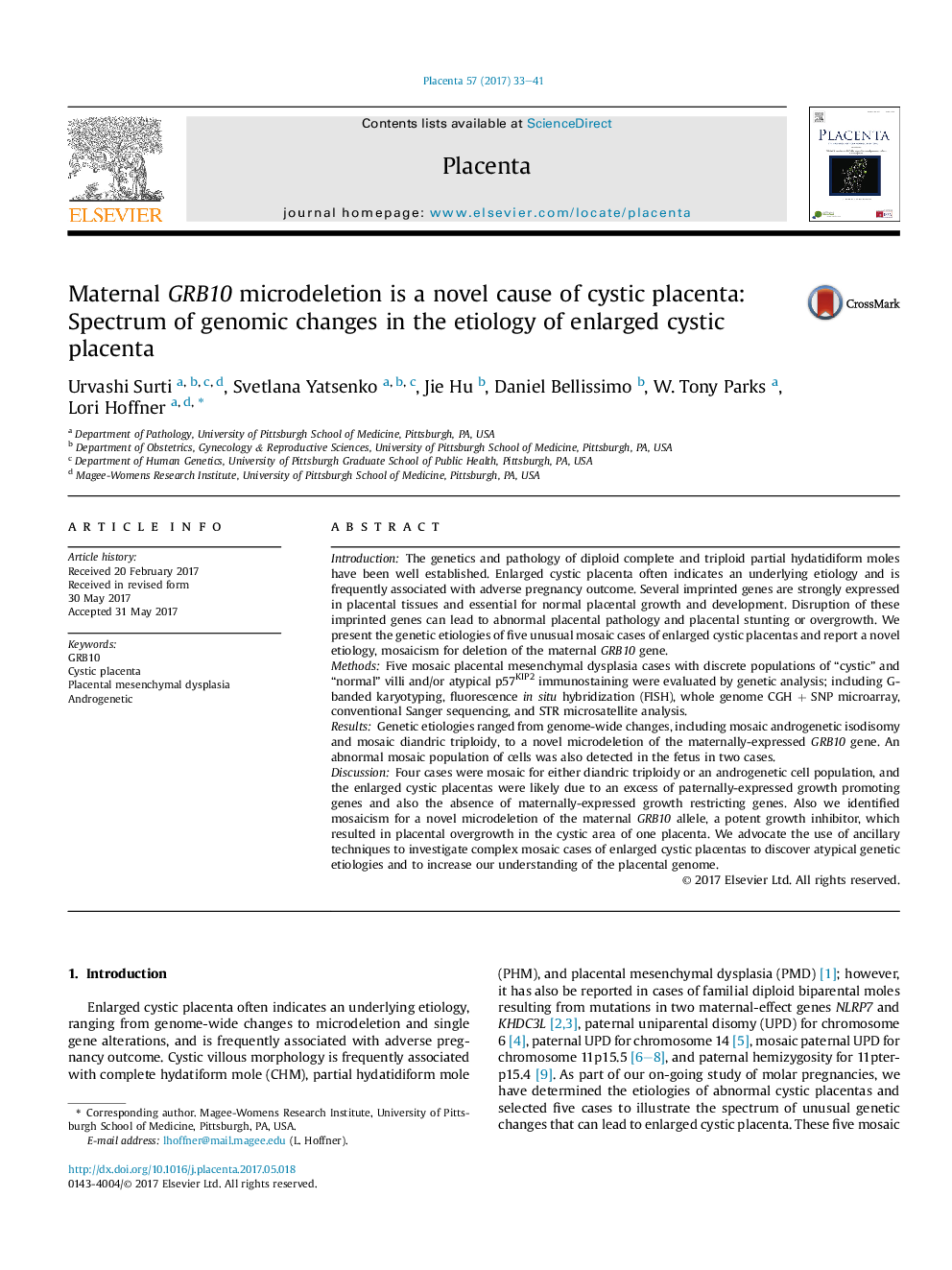| Article ID | Journal | Published Year | Pages | File Type |
|---|---|---|---|---|
| 5586179 | Placenta | 2017 | 9 Pages |
Abstract
Four cases were mosaic for either diandric triploidy or an androgenetic cell population, and the enlarged cystic placentas were likely due to an excess of paternally-expressed growth promoting genes and also the absence of maternally-expressed growth restricting genes. Also we identified mosaicism for a novel microdeletion of the maternal GRB10 allele, a potent growth inhibitor, which resulted in placental overgrowth in the cystic area of one placenta. We advocate the use of ancillary techniques to investigate complex mosaic cases of enlarged cystic placentas to discover atypical genetic etiologies and to increase our understanding of the placental genome.
Related Topics
Life Sciences
Biochemistry, Genetics and Molecular Biology
Developmental Biology
Authors
Urvashi Surti, Svetlana Yatsenko, Jie Hu, Daniel Bellissimo, W. Tony Parks, Lori Hoffner,
